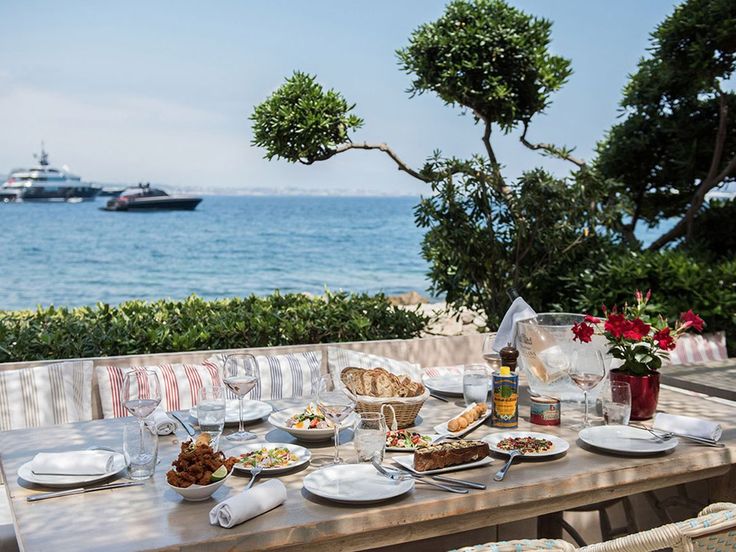Culinary tradition isn’t just old recipes on a menu. It’s what locals order for lunch on a weekday, what market stalls are proud to sell, what grandparents still teach their children. On the French Riviera, those traditions thrive in small cafés, farmers’ markets, and neighborhood bistros.
The Riviera’s cuisine reflects its Mediterranean climate, varied coastlines, and cultural cross-currents with Ligurian, Provencal, and Niçard influences woven in. Below is a curated list of signature dishes you should plan your plates around and tips for timing, ordering, and savoring them in context.
From the sea ─ dishes that define Riviera côte
Before listing dishes, I’ll offer a practical tip: when staying on or cruising the coast, book your multi-day charter early – seafood is freshest right off the boat, and being mobile gives you easier access to coastal villages where the food still feels rooted. From there, timing your meals and knowing which towns specialize in which dish helps you avoid tourist traps and find where the real tasting happens.
1) Bouillabaisse (and its local variants)
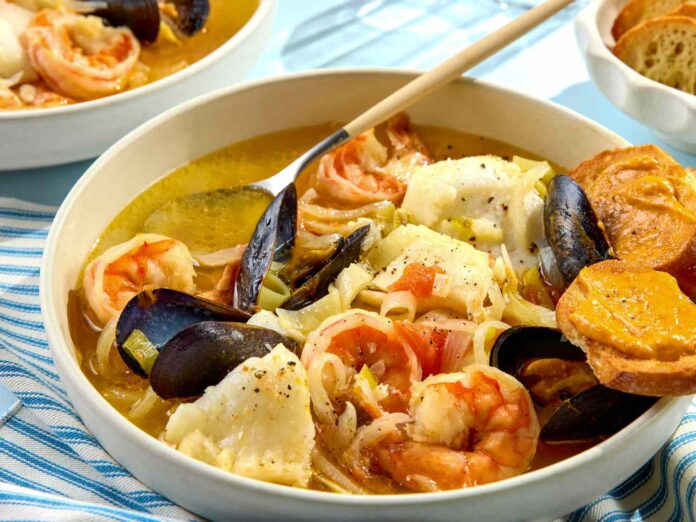
You’ll find bouillabaisse in many forms, but in the Riviera it is lighter and more herby than its Marseille origin. Made with local fish (like rascasse, conger eel, or small rockfish), it’s simmered with fennel, saffron, and sometimes pastis or white wine. Some coastal restaurants will reduce the broth into a « court-bouillon » style, and serve seafood on the side.
Best time / place to try it
Have lunch around 12:30–1:30 pm to get the freshest catch. In small ports like Villefranche-sur-Mer or Saint-Jean-Cap-Ferrat, you’ll often see fishermen unloading nets in the morning – restaurants near the port tend to offer the best.
Tips
- Ask which fish are local that day.
- If the price seems too low on “bouillabaisse,” the fish may be continental imports.
- Share it – portions are generous, and the broth is worth sipping last.
2) Socca and panisses – snackable bites by the sea
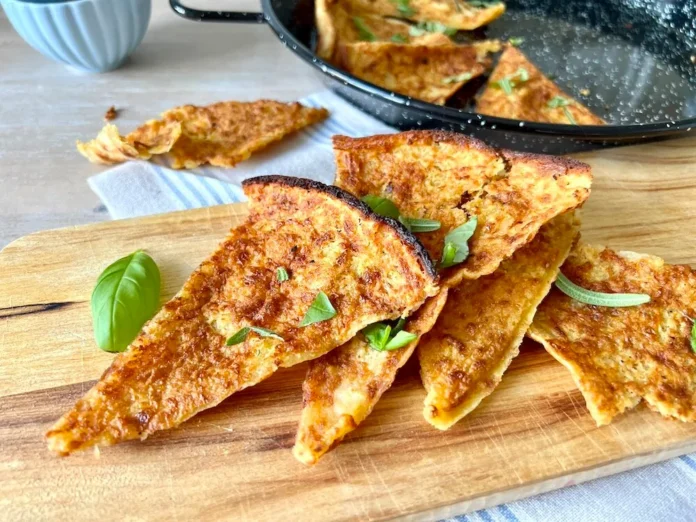
These little fritters are Ligurian heritage integrated into Nîce’s street food.
- Socca is a crisp chickpea pancake, thin and cooked at high heat in a wood-fired oven. It’s often served piping hot, folded, and best eaten immediately.
- Panisses are fried chickpea patties – thicker, heartier, often served warm from a stall with a sprinkle of salt.
These are ideal mid-morning or afternoon snacks. Walk through Nîce’s old town, grab a piece, and eat while strolling. They’re inexpensive, filling, and a local habit rather than a tourist stunt.
Did you know?
Socca’s recipe has barely changed in 300 years – simple ingredients, wide appeal.
On land ─ what the interior tastes like
The Riviera’s inland cuisine leans more toward comfort and tradition. Drive even a few kilometers away from the coast, and the menu shifts from seafood to slow-cooked meats, aromatic herbs, and seasonal vegetables.
1) Pissaladière – more onion than anchovy
Pissaladière is often described as the Riviera’s version of pizza, but that comparison misses its subtlety. The dough is thicker than a thin-crust pizza, the topping is mostly caramelized onions, black olives, and anchovy filets. No tomato (or just a light brush). It’s from the Niçaise tradition, and served either warm or at room temperature.
Where to try it
In small restaurants in Nîce, Èze, or Antibes, especially during lunchtime or early afternoon. Some markets even sell squares of it to go.
Best pairing
A glass of rosé or a crisp white wine – avoid heavy reds which overpower the delicate blend of sweet onion and brine.
2) Daube Provençale – comfort from the countryside
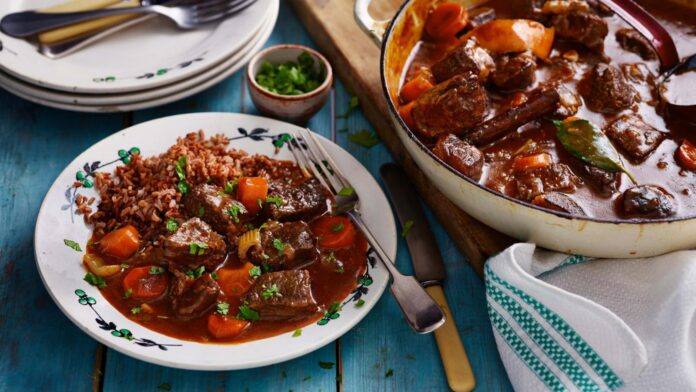
When you travel inland even a few kilometers, you’ll find classic Provencal fare. Daube is a slow-braised beef stew made with red wine, carrots, herbs (thyme, bay leaf), sometimes orange peel, and often braised in a clay pot called a daubière.
Why it’s worth ordering
- It often arrives late (around 1:30–2:00 pm or evening), because slow cooking takes time.
- Portions are generous, meant to share.
- It’s rich and warming – ideal after a windy mountain hike or during transitional seasons.
A restaurant in Grasse or Vence might advertise “daube maison” on a specials board – that’s often your cue that it’s genuine. Ask staff how long it’s been cooking.
Sweet Traditions
Afternoons on the Riviera are for something sweet, usually paired with espresso or chilled dessert wine. Pastries and tarts often combine Mediterranean produce with Provençal technique.
Tourte de Blettes
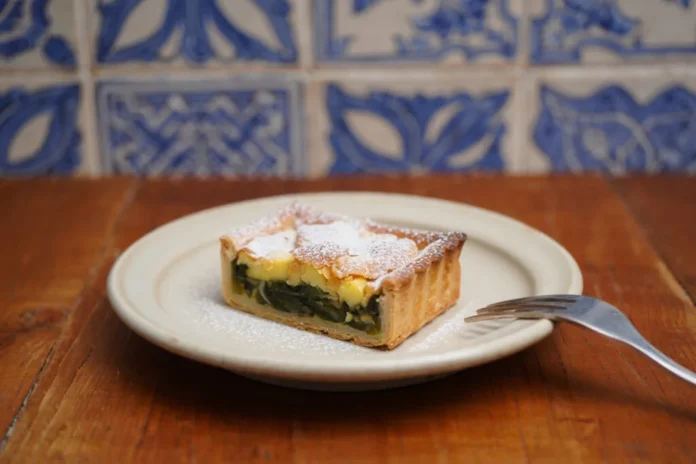
This dessert surprises most travelers. It’s a pastry filled with Swiss chard, raisins, pine nuts, and a touch of orange zest. Sweet but balanced, it’s common in Nice bakeries, especially in cooler months.
Tip: Eat it in the afternoon with strong coffee. It’s seasonal but unforgettable.
Tarte Tropézienne
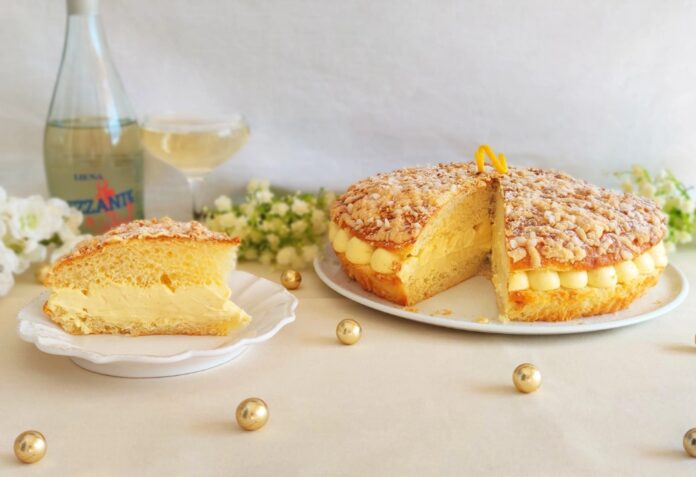
A light brioche filled with custard cream, famously associated with Saint-Tropez. Created in the 1950s, it’s now found across the Riviera.
Look for “La Vraie Tropézienne” in bakery windows, it marks the authentic version.
Artisan Ice Cream
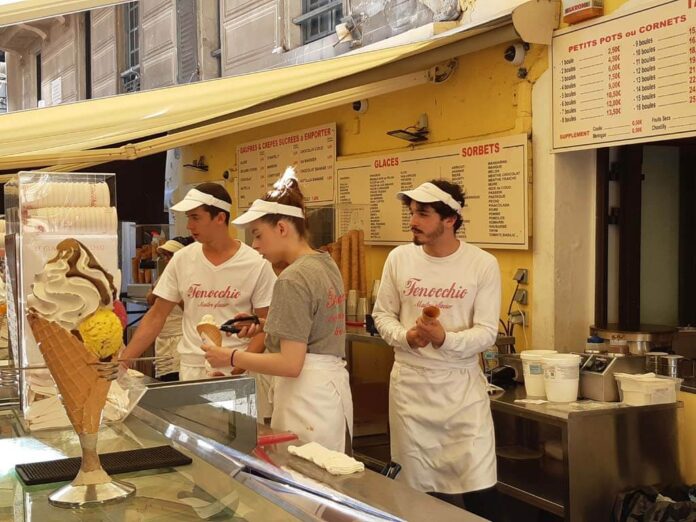
Local gelaterias often prepare flavors like fig, lemon, basil, or olive oil. Smaller shops making gelato daily offer the freshest experience. Try it after lunch or during an evening walk along the promenade.
The Riviera on a Plate
As you plan where to dine, remember this: traditional dishes are often less about fancy staging and more about straightforward quality, fresh fish, good oil, seasonal vegetables, slow cooking. They don’t always appear on glamorous menus. A small port café, a market stall, or a countryside auberge is often your gateway to authentic flavor.
Don’t worry if you don’t hit every dish. Focus on the ones that intrigue you most and time your meals so you’re in the right place at the right moment. In the French Riviera, food and place are inseparable. Let them guide each other, and your journey will taste like the coast itself.

